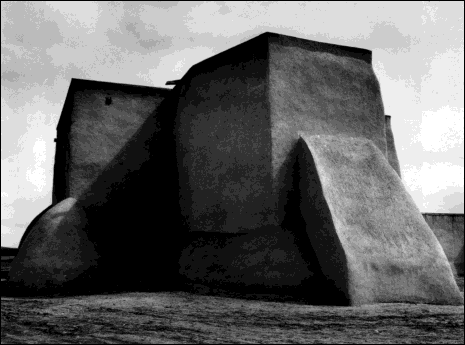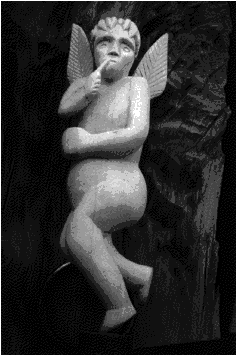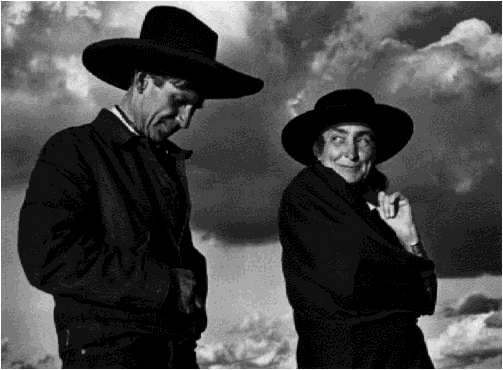And the Southwest
Ansel Adams
(Little Brown)

All the while I am looking at these I am wondering how he did it? With nothing but an ancient 8x10 or 16x20 view camera and black-and-white stock, visually recording none but the most simple scenes, he created heart-stopping photographic drama. If you or I took our $15,000 Rapideflex Z2000 with its Subloading Fractionation 560X gear-ratio and B1500 Lite Loader Reflectospectograph plus f3000 Magnefoppish lens out there and shot the same photographs, they would never, in a hundred years, come to resemble what Adams did to and with the canyons and desert and people of the Southwest.
We might miss the scale and composition and balance, but more, we would miss out on the brooding magic of that region. Part of it might have to do with the fact that Adams exerted complete control over the means of production. He chose camera and stock. He developed the films himself, selecting, with the darkroom equipment, exactly what to cut, and what to include, and, most of all, the potent contrasts, the delicate balance between light and dark.
Finally, most important of all, he lived in the desert for months at a time --- put up with the wind and the heat and the dust and the dryness to capture the, what could we call it? --- the spirit of it?
Such unearthly lights and darks! Streaks of clouds in the moonrise (Hernandez, New Mexico); unearthly reflections (the Acoma Pueblo); billowing clouds (Tucson). These were only partially created by the divine; they were augmented by Adams in his darkroom. And, thus, although he was manufacturing nature, as with all such creations, there has to be an echo of the truth for it to strike the rest of us as "real" --- to create, if you will, what you and I think we want.
 We want the sunrise shadows at Bad Water to be bleak; we want that thunderstorm over Cimarron, New Mexico to be ominous; we want the aspens in Northern New Mexico to be so shimmery, ghostly white against the impenetrable dark; we want the blocky shadows in the St. Francis Church [above] to be heavy and primitive --- ominous --- not unlike a heavy-footed creature out of pre-history.
We want the sunrise shadows at Bad Water to be bleak; we want that thunderstorm over Cimarron, New Mexico to be ominous; we want the aspens in Northern New Mexico to be so shimmery, ghostly white against the impenetrable dark; we want the blocky shadows in the St. Francis Church [above] to be heavy and primitive --- ominous --- not unlike a heavy-footed creature out of pre-history.
People appear here and there as well: a prehistoric visage that is a "Spanish- The editors have included excerpts from letters and writings of Adams: "I feel as if I had lived a whole life in this country, so perfectly does it seem to fit me," he relates. With the glory of his photographs, words are almost redundant, even when he exclaims, with fine irony (for he was, to the end, a black-and-white photographer), Impossible to tell the beauty of the place and the effect of color --- the cream rocks and earth --- the green blue desert and the brilliant reds and yellows and blacks of the Indian costumes.
